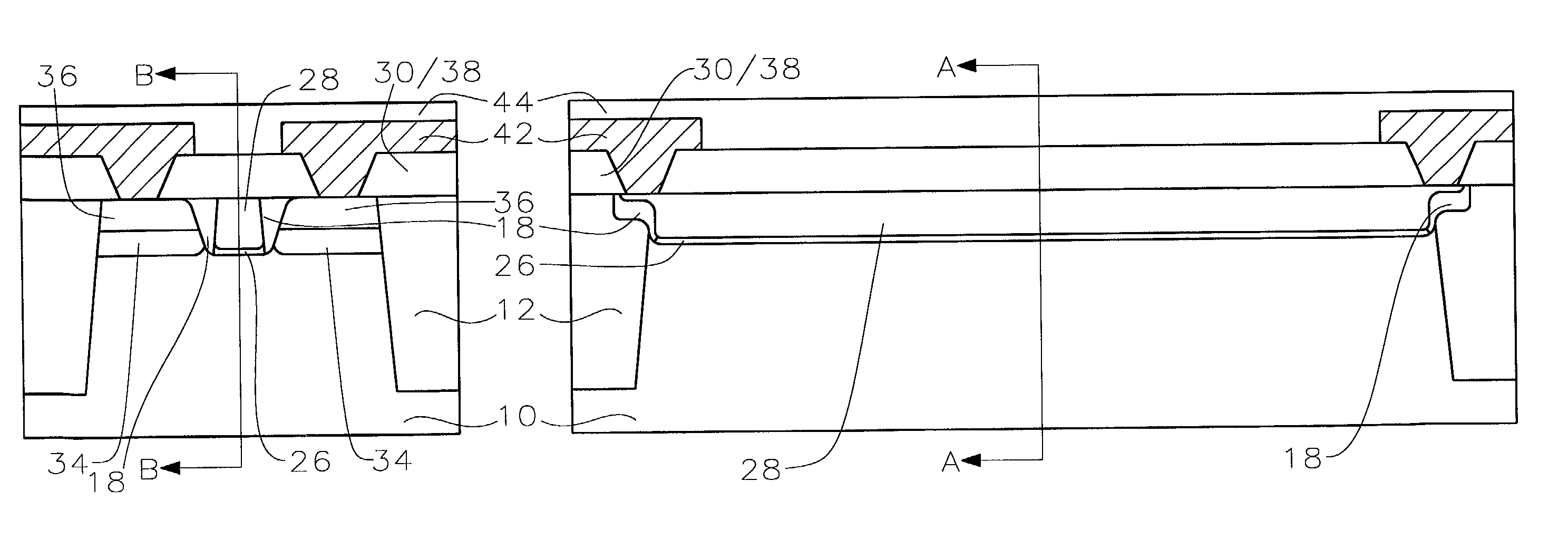Process flow for a performance enhanced MOSFET with self-aligned, recessed channel
a technology of mosfet and process flow, which is applied in the direction of semiconductor devices, electrical devices, transistors, etc., can solve the problems of reducing the performance of the transistor, so as to improve the inter-electrode capacitance, the effect of reducing the cost of the transistor
- Summary
- Abstract
- Description
- Claims
- Application Information
AI Technical Summary
Benefits of technology
Problems solved by technology
Method used
Image
Examples
Embodiment Construction
[0020]This embodiment describes formation of a 100 nm recessed gate electrode in an n-channel (NMOS) or p-channel (PMOS) transistor. It will be understood by those skilled in the art that the invention can be extended to the formation of gate electrode structures of different sizes on a semiconductor wafer.
[0021]Referring now to FIG. 1 through FIG. 12, depicting schematically one embodiment of the present invention. Cut line “a” corresponds to each respective side view in FIG. 1a through FIG. 12a. Cut line “b” on each of the figures corresponds to each respective lateral side view shown in FIG. 1b through FIG. 12b.
[0022]Refer now more particularly to FIG. 1 where a partially formed MOS transistor is represented. A substrate 10 with a crystal orientation, for example, is provided. For an NMOS device, the substrate 10 is composed of p-type silicon; for a PMOS device, the substrate 10 is composed of n-type silicon. Shallow trench isolation (STI) regions 12 comprised of silicon oxide ...
PUM
 Login to View More
Login to View More Abstract
Description
Claims
Application Information
 Login to View More
Login to View More - R&D
- Intellectual Property
- Life Sciences
- Materials
- Tech Scout
- Unparalleled Data Quality
- Higher Quality Content
- 60% Fewer Hallucinations
Browse by: Latest US Patents, China's latest patents, Technical Efficacy Thesaurus, Application Domain, Technology Topic, Popular Technical Reports.
© 2025 PatSnap. All rights reserved.Legal|Privacy policy|Modern Slavery Act Transparency Statement|Sitemap|About US| Contact US: help@patsnap.com



